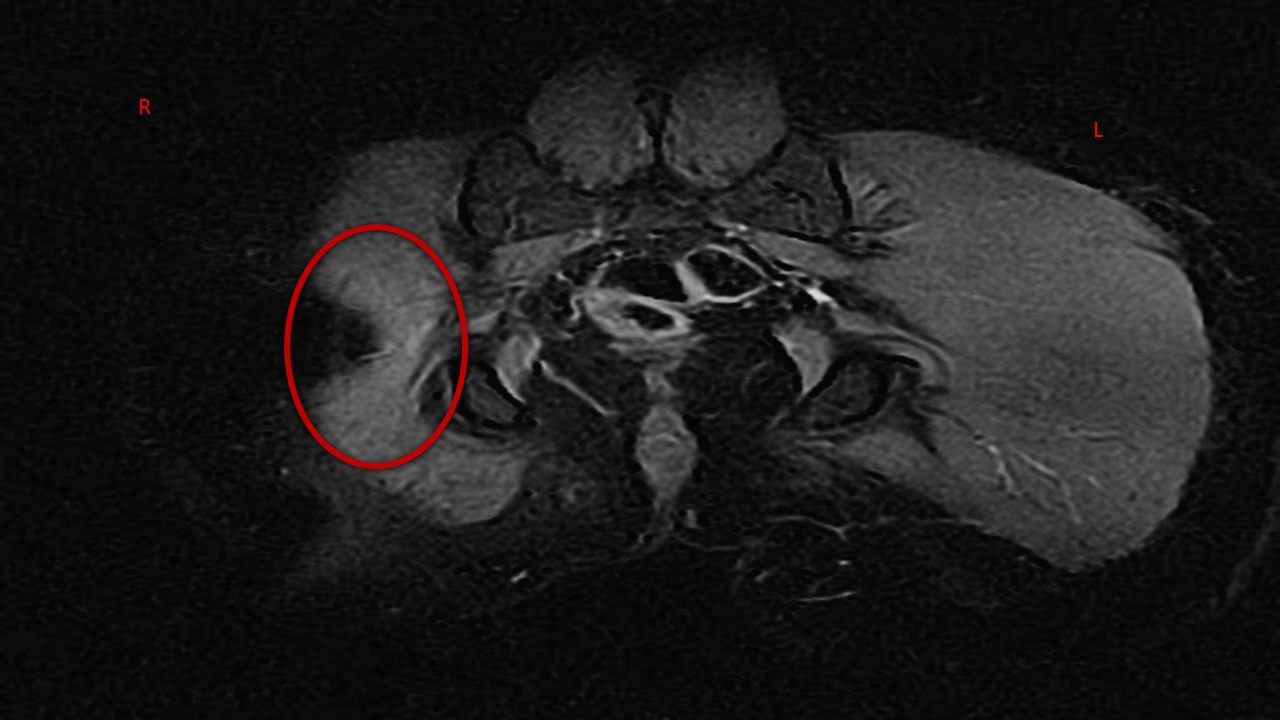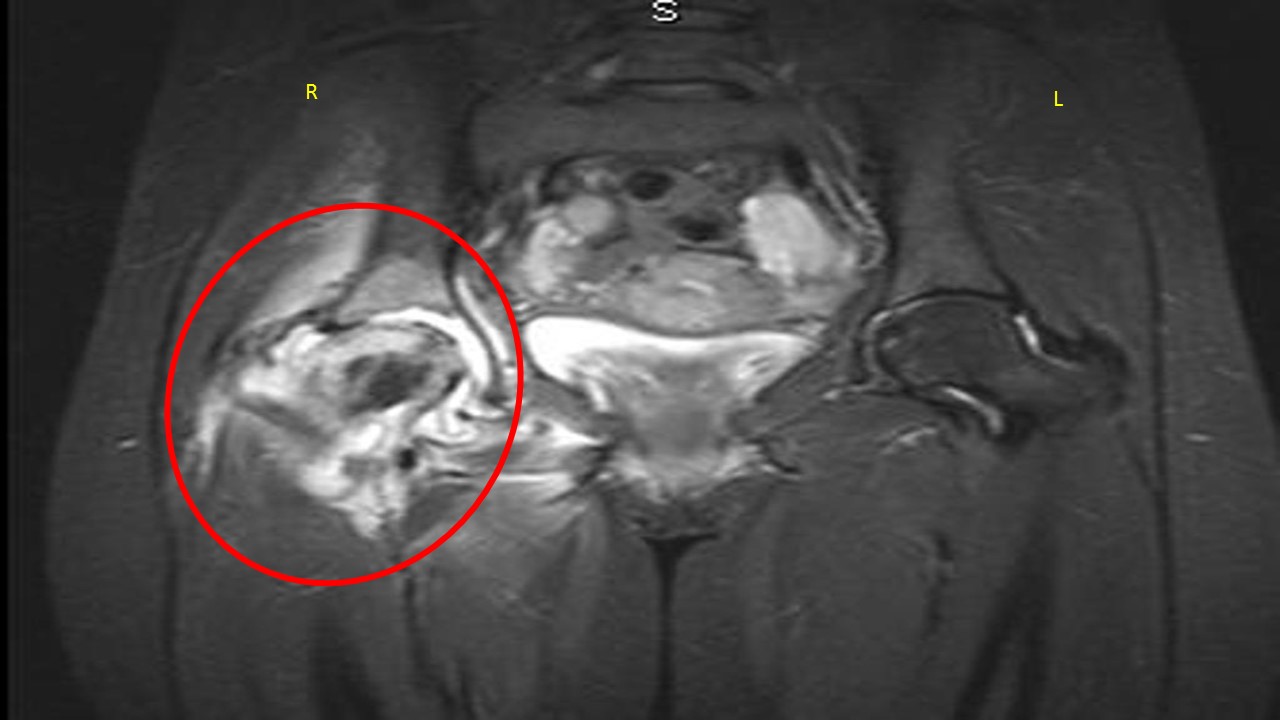Septic arthritis MRI
|
Septic arthritis Microchapters |
|
Diagnosis |
|---|
|
Treatment |
|
Case Studies |
|
Septic arthritis MRI On the Web |
|
American Roentgen Ray Society Images of Septic arthritis MRI |
Editor-In-Chief: C. Michael Gibson, M.S., M.D. [1]; Associate Editor(s)-in-Chief: Venkata Sivakrishna Kumar Pulivarthi M.B.B.S [2]
Overview
The role of MRI in the diagnosis of septic arthritis has been increasing in recent years in an effort to detect this entity earlier. Findings are usually evident within 24 hours following the onset of infection and include: synovial enhancement, perisynovial edema and joint effusion. Signal abnormalities in the bone marrow can indicate a concomitant osteomyelitis.The sensitivity and specificity of MRI for the detection of septic arthritis has been reported to be 100% and 77% respectively.
MRI
In the diagnosis of septic arthritis, MRI may be particularly useful in patients with joint infection where it is difficult to access (e.g. sacroilitis) as it displays greater resolution than CT or radiography for anatomy, soft tissue abnormalities, visualizing joint effusion and differentiating bone and soft tissue infections.[1] Like, other imaging studies MRI also unable to differentiate infectious and inflammatory arthropathies.[2][3][4] [5]
MRI of Right Hip Septic arthritis Coronal STIR
MRI of Right Hip Septic arthritis Coronal T2
References
- ↑ Graif M, Schweitzer ME, Deely D, Matteucci T (1999) The septic versus nonseptic inflamed joint: MRI characteristics. Skeletal Radiol 28 (11):616-20. PMID: 10591923
- ↑ Erdman WA, Tamburro F, Jayson HT, Weatherall PT, Ferry KB, Peshock RM (1991) Osteomyelitis: characteristics and pitfalls of diagnosis with MR imaging. Radiology 180 (2):533-9. DOI:10.1148/radiology.180.2.2068324 PMID: 2068324
- ↑ Sandrasegaran K, Saifuddin A, Coral A, Butt WP (1994) Magnetic resonance imaging of septic sacroiliitis. Skeletal Radiol 23 (4):289-92. PMID: 8059255
- ↑ Modic MT, Pflanze W, Feiglin DH, Belhobek G (1986) Magnetic resonance imaging of musculoskeletal infections. Radiol Clin North Am 24 (2):247-58. PMID: 3714999
- ↑ Tehranzadeh J, Wang F, Mesgarzadeh M (1992) Magnetic resonance imaging of osteomyelitis. Crit Rev Diagn Imaging 33 (6):495-534. PMID: 1476623

